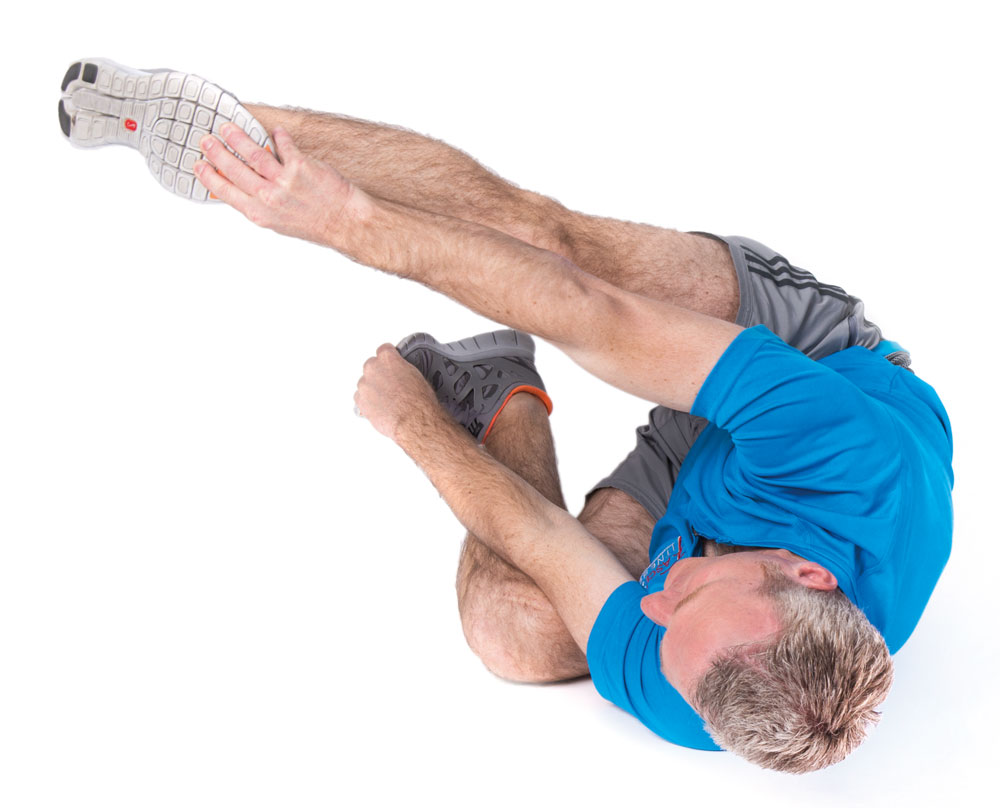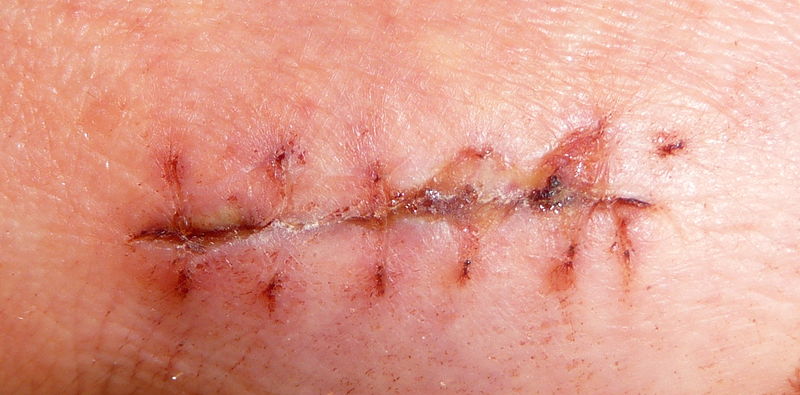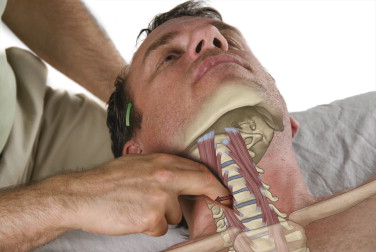Fascial Training for Soccer Players
Are there still power reserves remaining unused by elite athletes? Markus Roßmann says there are. He teaches soccer coaches how to train their fasciae. Frank Aschoff spoke with him.
What made you pick soccer players as your target group for fascial training?
I’m an athlete myself. I’ve played basketball in the regional league and the second division, and I have been a youth coach for years. I have known for a long time that special training of the fasciae can boost an athlete’s capacity and prevent injuries. It can also be used for rehabilitation.
The boosted capacity can be explained easily: An elastic fascial network results in a smaller consumption of energy while moving; this can set aside power reserves that a soccer player might need in the defining last ten minutes of the game. A second important aspect that I have experienced is that the fascial training improves the presence on the field. Players talked about a better sense of direction, being able to comprehend faster where their teammates and opponents were, and more precise passes and shots.
How can this be explained?
A very big part of someone’s body perception, their proprioception, is influenced by the fascial system -more than by the receptors in the structures near the joint which fire mostly when the joint is an end-range position. This is how you can explain the observed effects on the field. The fascial network is our largest sense organ, so it is only logical to train it.
Currently, a lot of attention is drawn to this subject, and many reports refer to the well-known international fascia researcher, Dr. Robert Schleip. In what way are you working with him?
He is a Rolfing instructor and was the one that trained me as well. He also let me be a part of his practice quite soon. I knew that he was doing a lot of research, and then he asked me if I wanted to work with him on a new concept for moving that lets you actively train your fascia. In the beginning, there were five or six of us that worked closely together. My job is to turn their latest scientific discoveries into actual moves. It’s a fact that people have always been training both muscles and fascia. Obviously they cannot be separated. We are moving the focus on the fascia. While people train, we let them move in a way that activates more of the fascia and therefore makes them need fewer muscles. This way of moving is well known by a lot of people, and yet it is somehow new to them.
So research results are put into practice regularly?
Yes, we are very lucky that Dr. Robert Schleip is so close to the source and that he keeps us informed on a regular basis.
What have you done with the soccer players so far?
So far, I mainly provided training for trainers, especially at the soccer association of Württemberg, at the Bavarian soccer association, but also at the Federation of German soccer-trainers. Those are the ones with the highest trainer certification. However, I am not only involved in soccer but in many other sports like golf, triathlon and long-distance track as well. On occasion, I was also a trainer at a summer camp for Norwegian biathletes.
What do you offer to soccer trainers?
First, I offer some theoretical basics, particularly concerning soccer. Soon, we focus on practicing. The course participants do a lot of exercises. This way, the trainer can feel the effects for themselves, which is important! It then becomes clear to them: We can change how we move in a way that activates our fascial network more.
It is no secret that many soccer players are not that flexible and often suffer from pulled or torn muscles. This is why I bring up the fascia roll in courses. After the trainers have worked with the roll for 15 minutes, they usually feel like they can move a lot more easily. Also, they notice very quickly that the finger to floor distance is reduced by a lot. They say, “I can reach further down now!” Every soccer player has areas of struggles. Often, we can take active measures to prevent problems, or help with a looming pulled muscle. I have been told various times by the players that they were able to go back to training the very next day.
Another important aspect is the “fascial stretch” which offers three-dimensionality. When doing so-called “correct axial stretches”, we only stretch a small part of the neglected parts. There’s no impulse. It is essential, not only for soccer players, to move on to a change of vectors. The athlete can discover for himself: Where do I feel the pull? Where do I feel this exercise? That’s something no trainer can tell him; everyone has to feel it for himself. So, no more one-dimensionality. It’s time to move on to three-dimensional stretching with many changes of vectors.
You know, each person is an individual. Everyone has a different bone structure, different muscles, different fascia, and, most of all, a different everyday life. While one person sits behind his or her desk all day, another works physically in the construction business. Their bodies are being formed individually. However, when it comes to sports, everyone is told to do the same stretches in the same positions. It just doesn’t make sense.
Only once the athlete starts looking for better ways when he tries various vectors changes, he will be able to activate a wide range of fasciae and muscles, and he will be prepared for bigger athletic challenges.
You are talking about a playful element as well.
Definitely. A basic exercise is given, and then everyone can find the area where he or she feels the pull: “I have potential there, I can work on that.” And then they are allowed to do continuous, soft and bouncy movements in that specific direction – exactly what we were told not to do for thirty years.
How do you explain this new attitude towards bouncy movements to the trainers?
Well, the goal is a tear-resistant, elastic fascial network. With examples like the Achilles’ tendon, science has clearly shown that there can only be an impulse with bouncy movements. Normal stretching, without bouncing or pre-stretching, is not enough for an impulse! You can look at the tendon like a rubber band. It can conserve energy or give it off. To get low energy consumption, it needs optimal elastic characteristics. To train the Achilles’ tendon to have this elastic quality, you don’t have to do any extra training. All it takes is the inclusion of this knowledge in the normal training. For instance, a good exercise to improve the catapult effect of the Achilles’ tendon is bouncy, teetering movements when going up the stairs –of course, after pre-stretching.
What are the typical areas a soccer player struggles with?
Mainly the calf muscle, hamstrings, quadriceps, but obviously, the lumbopelvic and hip area.
Groin problems are fairly common, too. What about those?
There is still need for more research. If we’re lucky, we will have new insights soon.
How do the athletes react to the new exercises?
The majority of the prescribed exercises receive positive feedbacks because the soccer players can feel the improvement straight away. Also, it is diverse and entertaining. The area of the Sensory Refinements, or the proprioception exercises, take some to get used to by many players. Often, they smile at me oddly when I ask them to turn around on the floor and “toll”. However, once they give it a try, they quickly realize that it does a lot for them, especially once they’re out on the field again. The new insights about fascial training are not being used to their full potential yet, especially not in male sports. Luckily, as an athlete, I know how to “sell” these exercises. I know that I don’t need fancy instructions, so I don’t use instructions that were meant to stimulate the imagination like “Imagine you are a starfish…”.
Mr. Roßmann, what is your next goal?
The plan is to include the positive effects of fascial training in many different sports. I’m highlighting the word “include” here because it is extremely important for us to make clear that fascial training is just another tool in the “training and therapy” tool box. When used correctly as a part of training and therapy, I promise a bigger capacity, faster healing and a lower risk of injuries. Another big goal has to be the inclusion of fascial training in mass sports. It is simply a fact that it allows you to do more for your health in less time –and this is a trend that fits our modern lives perfectly. Last but not least, there is a by-product of fascial training we should not forget about: it encourages creativity and self-responsibility. Two things that we don’t get too often in our working lives or the society.
Thank you for this interview!
This article is an English translation of: Aschoff F. 2014. Fasziales Training mit Fußballern. Im Gespräch: Markus Roßmann. Z. f. Physiotherapeuten 66, 6: 14-22. Copyright: Richard Pflaum Verlag GmbH & Co. KG, Lazarettstr. 4, 80636 München, Germany
A full article is available at Terra Rosa E-mag Issue 15, Dec 2014
Markus Roßmann
Dipl.-Sports. Univ., a Certified Rolfer, MAT/EAP certification, fascial trainer, many years of experience as the director of motion and health seminars, member of the European Rolfing Association. In 1992 graduated from the Technical University Munich as a sports scientist (rehabilitation/ prevention). After working abroad as a ski instructor in Canada, he was the head of medical training therapies of several ambulant rehabilitation centres. Searching for new, more efficient and sustainable approaches, he came across the Rolfing method. After completing his training in Munich in December of 2004, he started working in Munich and Erding.



